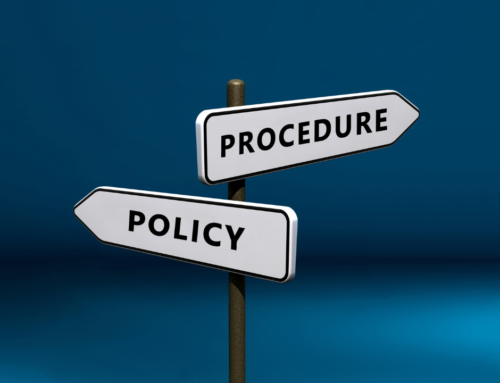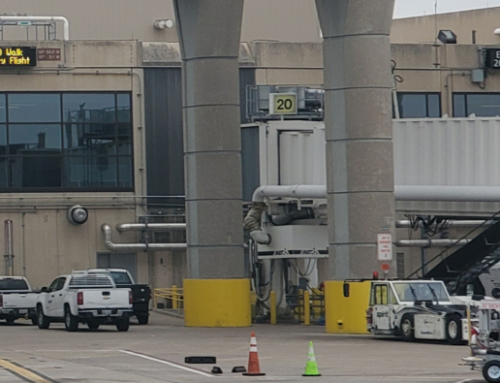Let me start with one important question that is a theme throughout this post:
How prepared are you?
There are essentially five aspects to a robust and effective Workplace Violence Prevention program:
- Management commitment and worker participation
- A thorough Risk Assessment to identify hazards in the workplace
- Effective hazard prevention and control procedures
- Health & Safety Training
- Documentation and Program Evaluation
Each of these parts is as critical and important as the next and if any one of these aspects of the program is given lip service, the risk for the staff is immediately increased.
But let’s not overwhelm ourselves too much and just focus on number four: Health & Safety.
In this post we’ll be examining that very topic with the help of a useful checklist.
First, we should know what the main objectives of a complete Health & Safety Training program are:
- To ensure that employees are aware of potential hazards within their workplace
- And that they are aware of how to protect themselves and their coworkers through established policies and procedures.
I have delivered enough training programs to know that there are many employees out there who have little, if any, idea of what steps their organization has taken in order to protect their workers.
There is so much reliance in the the safety committee to look after “those things.”
But the problem is that you need the individual worker to be aware of how to work safely, not just members of the OH&S Committee!
After all, every worker has a LEGAL RESPONSIBILITY to behave in a safe manner at work. That applies (here in British Columbia and in four other Canadian provinces) to not just safe physical behaviour but also safe psychological behaviour.
The other day I was delivering training to a group of experienced supervisors, and one of the participants in the room asked two questions: Did their organization have a Code of Conduct and if they did, where was it located?
As you may imagine, this was a tell-tale sign that if an experienced supervisor was not aware of this information, then perhaps there was a gap in their organization’s program.
My focus here is on ‘personal safety,’ but you can expand it to deal with additional specific hazards that your business faces regularly.
The following is a handy checklist for you, to make sure that you are covering the essential elements of a comprehensive health and safety training program.
And without further ado, let’s get started (I hope your pencil gets a workout)…

The training that is delivered to all workers:
- Should involve all workers, including contract workers, supervisors, and managers
- Should provide an understanding of the concept of “universal precautions for violence”
- Should provide an understanding of the importance of a culture of respect, dignity, and active engagement in preventing workplace violence
- Should cover the policies and procedures of the workplace, as well as de-escalation and safe exit strategies
All workers should:
- Receive formal instruction on any specific or potential hazards associated with the unit or job, and the workplace
- Receive an initial orientation before being assigned their job duties (new, as well as reassigned workers)
- Receive required training at least annually
- Understand that refresher training may be needed more frequently, perhaps monthly or quarterly, to effectively reach and inform all workers
- Receive the training from qualified trainers who deliver the instruction at a level appropriate for the staff
Possible training topics should include:
- Risk factors
- Policies and procedures for documenting clients change in behaviour;
- The location, operation, and coverage of safety devices, along with the required maintenance schedules and procedures
- Early recognition of escalating behaviour or recognition of warning signs or situations that may lead to assaults
- Ways to recognize, prevent, or diffuse volatile situations or aggressive behavior and ways to manage anger
- Ways to deal with hostile people other than clients- such as coworkers
- Proper use of safe rooms (or areas) where staff can find shelter from a violent incident
- A standard response action plan for violent situations, including the availability of assistance, response to alarm systems, and communication procedures
- Progressive behaviour response procedures
- Ways to protect oneself and coworkers, including use of the “buddy system“
- Policies and procedures for reporting and recordkeeping
- Policies and procedures for obtaining medical assistance, counselling, and information regarding worker’s compensation after a violent incident or injury
The training that occurs for supervisors and managers should involve:
- How to recognize high-risk situations
- Encouraging workers to report incidents and to seek the appropriate care after experiencing a violent incident
- Reducing safety hazards and ensure that workers receive appropriate training
- Recognizing a potentially hazardous situation and making any necessary changes to reduce or eliminate the hazards
So, were you able to check off some boxes right away or do you have a lot of work to do?
Just remember, your training program is only going to be as good as the thought that you put into the development of it, and the level to which you engage those for whom the training is for in the first place.
If you can tick all of the boxes above, you will be doing a huge service to your organization and its most important asset: your employees.
Let the checking begin!








Leave A Comment